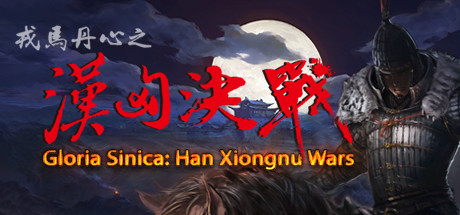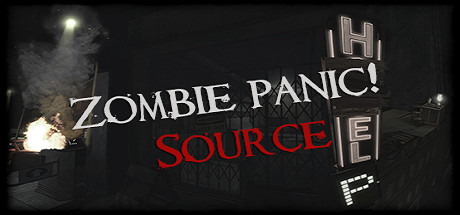
65
Players in Game
2 426 😀
1 627 😒
59,05%
Rating
$6.99
汉匈决战/Han Xiongnu Wars Reviews
Welcome to Han Xiongnu Wars. A stand-along game and synergy of historical Far East and multiple features in role-playing, real-time strategy and action gameplay. This game brings you to the eventful years of the early Han Dynasty, and faithfully presents the ancient eastern culture with many objects and scenes faithfully reconstructed...
| App ID | 688470 |
| App Type | GAME |
| Developers | Shangshixuan |
| Publishers | Shangshixuan |
| Categories | Single-player, Multi-player, PvP, Online PvP, Co-op, Online Co-op, Shared/Split Screen, Remote Play Together, LAN PvP, Shared/Split Screen PvP |
| Genres | Casual, Indie, Strategy, Action, RPG, Adventure |
| Release Date | 7 Dec, 2017 |
| Platforms | Windows |
| Supported Languages | English, Simplified Chinese, Traditional Chinese, Russian |

4 053 Total Reviews
2 426 Positive Reviews
1 627 Negative Reviews
Mixed Score
汉匈决战/Han Xiongnu Wars has garnered a total of 4 053 reviews, with 2 426 positive reviews and 1 627 negative reviews, resulting in a ‘Mixed’ overall score.
Reviews Chart
Chart above illustrates the trend of feedback for 汉匈决战/Han Xiongnu Wars over time, showcasing the dynamic changes in player opinions as new updates and features have been introduced. This visual representation helps to understand the game's reception and how it has evolved.
Recent Steam Reviews
This section displays the 10 most recent Steam reviews for the game, showcasing a mix of player experiences and sentiments. Each review summary includes the total playtime along with the number of thumbs-up and thumbs-down reactions, clearly indicating the community's feedback
Playtime:
1468 minutes
Gloria Sinica: Han Xiongnu Wars is a historically rich and mechanically intricate strategy RPG that immerses players in the dynamic and tumultuous period of early Han dynasty China. Developed by ShangShi Studio and built on the Mount & Blade: Warband engine, the game offers a unique blend of real-time combat, sandbox empire-building, and immersive role-playing grounded in authentic historical detail. Rather than relying on fantasy tropes or streamlined gameplay systems, Gloria Sinica aims to reconstruct the geopolitical landscape of 2nd-century BCE East Asia, and in doing so, creates a complex and often unforgiving experience that rewards thoughtful engagement with both its mechanics and historical context.
The game begins by allowing players to define their character’s origin and ambition, shaping the initial conditions of their journey across the sprawling frontier between the Han Empire and the nomadic Xiongnu confederacy. Whether starting as a lowly soldier, a mercenary, or a noble with a personal retinue, each background offers a distinct perspective and set of challenges. From there, the player enters a meticulously constructed world consisting of over two hundred cities and dozens of factions, including Han military governors, Xiongnu tribes, and other peripheral groups like Kangju and Dayuan. Every faction possesses unique attributes and troop compositions, and alliances are often shaped more by strategic necessity than ideological alignment.
Combat in Gloria Sinica retains the core of Mount & Blade’s real-time, physics-based skirmishes but expands them with broader tactical options, historical weaponry, and period-specific military doctrines. Formations, morale, terrain, and timing play vital roles in determining the outcome of battles, making each engagement feel like a carefully orchestrated conflict rather than a chaotic melee. As your character rises through the ranks, the ability to command larger armies becomes more critical. You’re expected to deploy intelligent tactics, manage fatigue and troop formations, and counter a wide variety of enemy units, including fast-moving cavalry and archer-heavy detachments commonly fielded by nomadic forces. The battles themselves often take place in varied terrain settings that mimic real-world geography, adding another layer of challenge and immersion.
Outside of battle, the game offers a surprisingly detailed economic and political simulation. Players can engage in trade, invest in workshops, improve infrastructure, and forge diplomatic ties with other factions. The economic layer is not just for flavor—it’s integral to sustaining armies, gaining influence, and unlocking new opportunities. Quests and random events range from escort missions and political intrigue to border skirmishes and logistical challenges, all of which reflect the historical complexities of Han frontier administration. The game also integrates historical figures such as generals Wei Qing, Huo Qubing, and Zhang Qian, offering both narrative weight and optional objectives that mirror their real-world exploits.
Graphically, Gloria Sinica reflects the limitations of its engine. The visuals are dated by modern standards, with character models and environments appearing somewhat blocky and unrefined. However, this is compensated for by the game’s dedication to historical authenticity. Armor, weaponry, and architecture are crafted with research-backed accuracy, presenting an aesthetic that is more educational than eye-catching. Sound design is serviceable, with traditional music and environmental audio that complements the game’s tone, though it lacks the polish of more mainstream titles. That said, the interface and menu systems are somewhat clunky, especially for players unfamiliar with the Mount & Blade ecosystem. Navigating town menus, managing garrisons, or assigning roles can feel unintuitive at times, particularly when multiple tasks compete for the player’s attention.
The learning curve is steep, and the game makes few concessions to newcomers. Tutorials are minimal, tooltips are often vague, and success is largely dependent on trial, error, and strategic experimentation. This lack of handholding may be frustrating for casual players, but for those with patience and curiosity, it contributes to a deeper sense of accomplishment. Victory in Gloria Sinica isn’t granted through brute force or resource spam—it comes through careful planning, wise alliances, and mastery of layered systems. It’s a title that respects the intelligence of its audience, assuming a level of interest in historical nuance and systemic depth that few other games in the genre demand.
Multiplayer is available via a separate DLC, but it’s region-locked to Chinese servers, which unfortunately limits its accessibility for players outside of Asia. As a result, most players will engage with the single-player content, which is fortunately expansive and rich enough to support dozens of hours of gameplay. The developers have continued to update and support the title, improving stability and gradually addressing balance issues, although community mods and user guides remain essential tools for navigating the more opaque aspects of the game.
Ultimately, Gloria Sinica: Han Xiongnu Wars is a labor of love—a game that trades mass-market appeal for depth, authenticity, and a singular historical vision. It’s not for everyone, especially those looking for instant gratification or sleek presentation. But for players who enjoy sandbox strategy, real-time tactical combat, and the opportunity to engage with a rarely explored period of world history, it’s an exceptional and deeply rewarding experience. Few games capture the fragility, ambition, and complexity of ancient empires quite like this one. Its flaws are evident, but so too is its ambition, making it a worthy addition to the library of any historically minded strategy enthusiast.
Rating: 6/10
👍 : 3 |
😃 : 0
Positive
Playtime:
1014 minutes
Great game, don't trust reviews, minor translation errors, old price was ridiculously high but now it's reasonable on sale. Lots of fun content, map might look empty but there's fog of war. Tons of missions in the story mode, but the beginning's kinda slow. Lot's of different factions, ofc not as fleshed out bc the game focuses on China and the Xiongnu (as name suggests). Siege mechanics are more fleshed out than native warband.
9/10 :)
👍 : 0 |
😃 : 0
Positive







